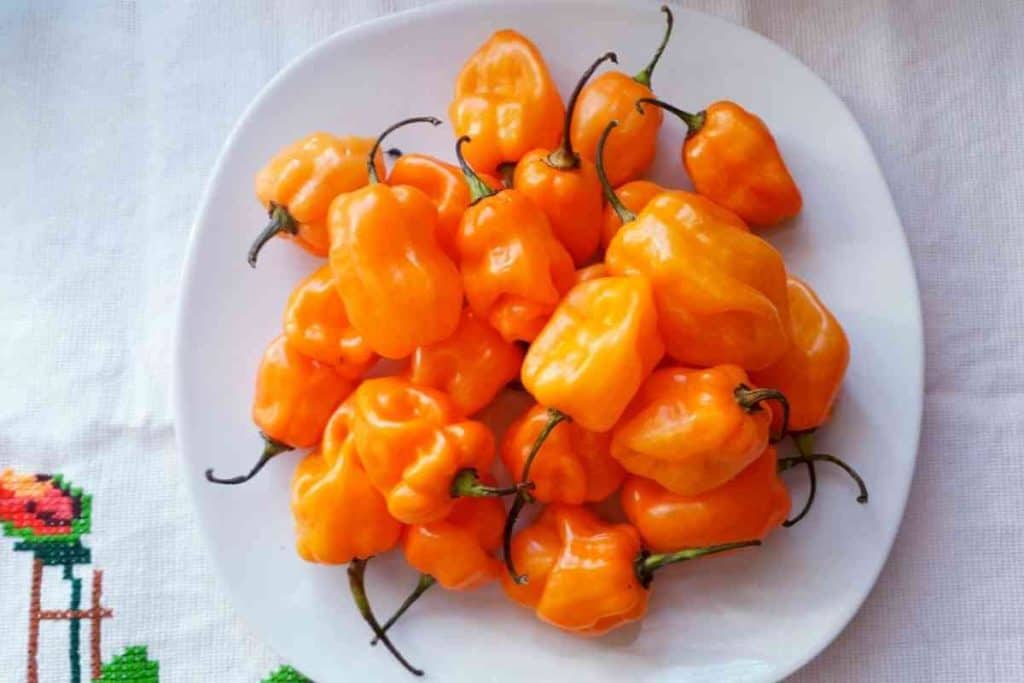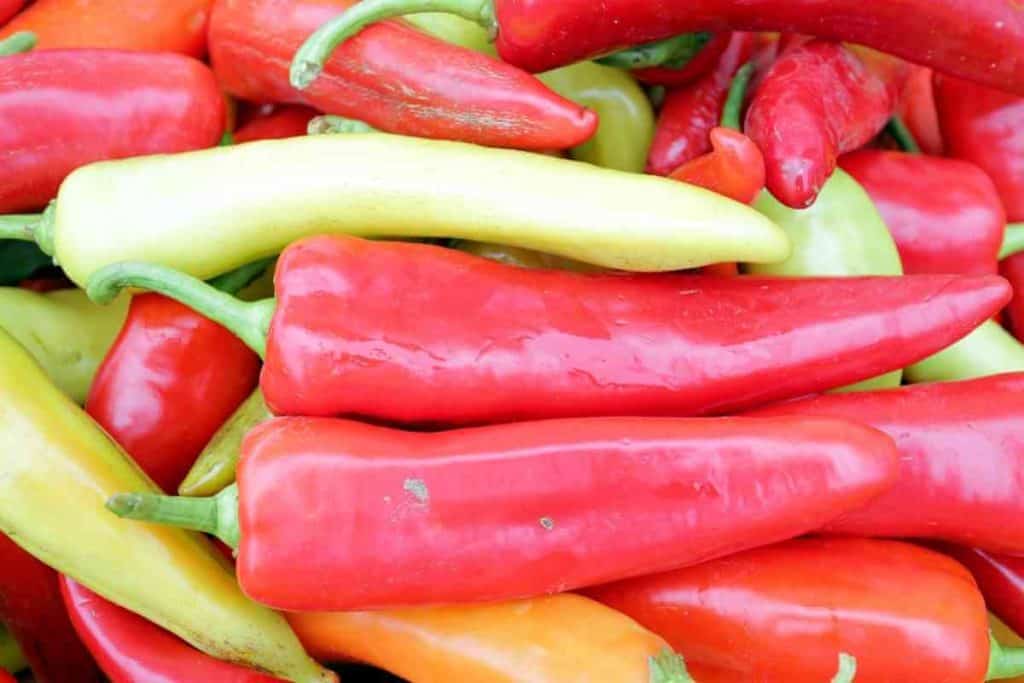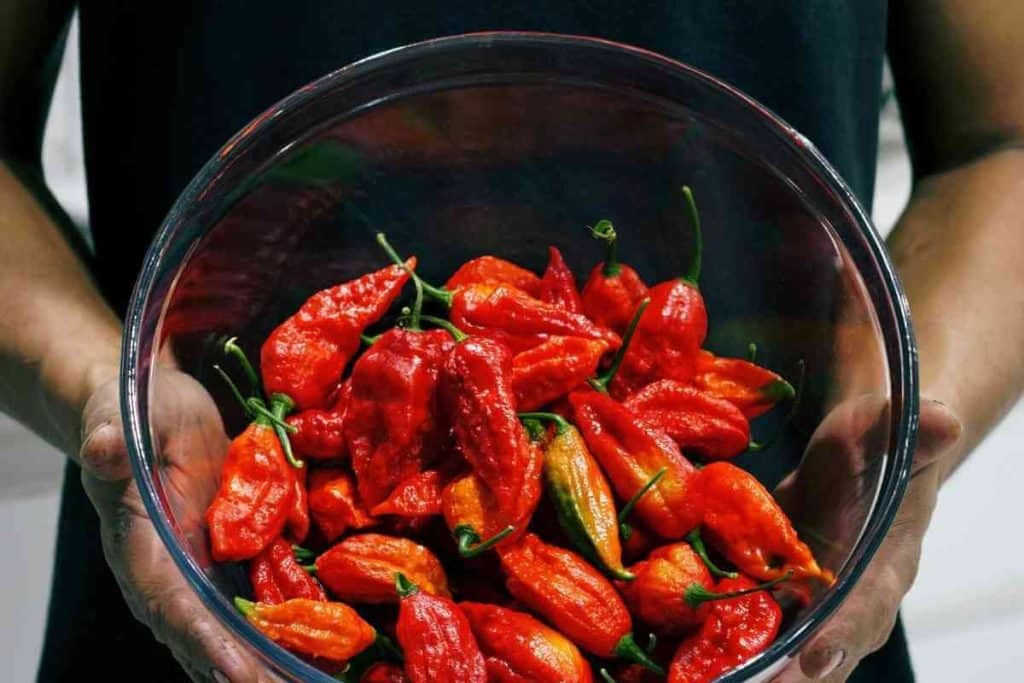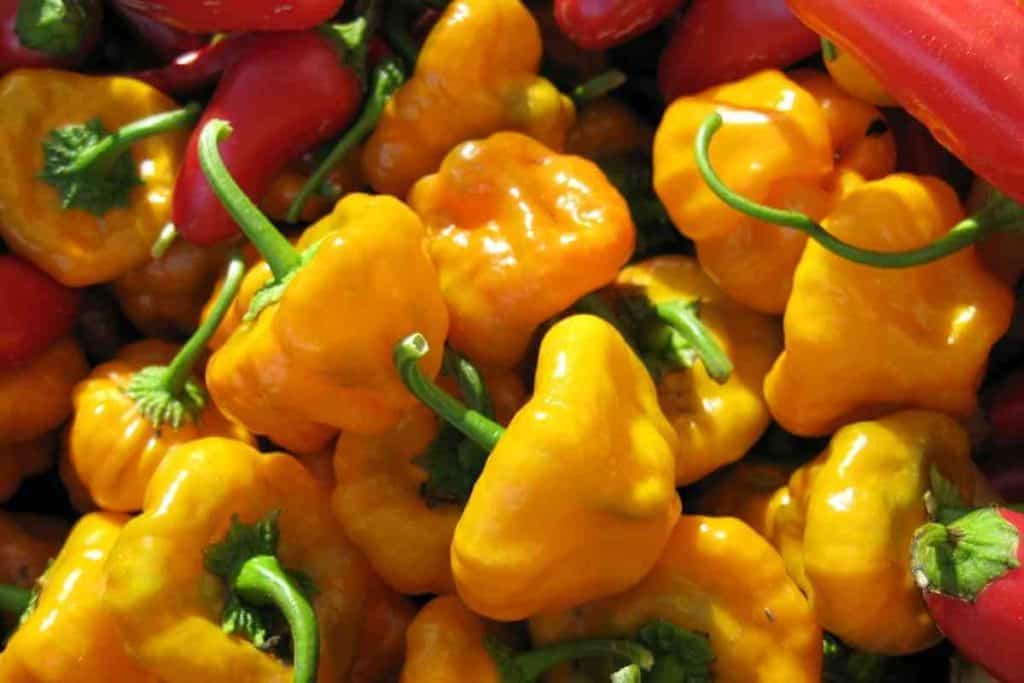This article may contain affiliate links and if you make a purchase after clicking on a link, we may earn a small commission at no additional cost to you.
Serrano peppers are commonly used in Mexican cuisines and are packed with extra flavor, with thin and tender skins that don’t need to be peeled and are packed with powerful heat.
You will need a good alternative if you don’t have fresh serrano chilies. Some of the best serrano chili substitutes you can use include fresh habaneros peppers, gueros, jalapenos, cayenne pepper, banana pepper, Anaheim, ghost pepper, etc.
You can also use crushed red pepper flakes in place of serranos; keep in mind that most substitutes for serrano chili have a different flavor which may alter the taste of your finished dish, but they are sure to deliver your desired heat level.
What Are Serrano Peppers?
The serrano pepper originates from the Mexican states of Puebla and hidalgo, and they get their name from the sierra mountains in these regions.
Serrano peppers make a big part of Mexican food, they pack a lot of heat, and you may need to wear gloves before handling the extremely hot chili peppers.
Serrano peppers are small hot green chilis but turn red or yellow when they ripen. Their thin, soft skin does not need to be peeled off before being used. These are flavorful peppers, but the high level of heat they pack is what really makes them stand out.
Do not be fooled by their small size, as they are three times hotter than a hot habanero; serranos pepper score about 8,000 – 23,000 SHU on the Scoville scale.
These peppers are not only commonly used in Mexican dishes, but they are also popular in South Asian cuisines as well. It is used in salsas, guacamole, relishes, garnishes, and even hot sauces; serrano peppers add the perfect heat kick to your dishes.
In the absence of serrano peppers, there are a handful of delicious alternatives you can use instead, many of which are way easier to source and add the needed heat.
Best Serrano Chili Substitutes
1. Jalapeno pepper

If you want to maintain the same heat level in your dish without using serrano, then jalapenos are your best substitute option; they are packed with dynamic flavors and a high amount of spiciness, just like serrano peppers.
Jalapenos are also easily sourced compared to serrano peppers but are milder in terms of heat with a Scoville score of 2500-8000 SHU; you can make up for this and achieve your desired hotness by increasing the number of jalapenos the recipe calls for.
2. Habanero pepper

Habanero is another type of pepper that packs just as much heat as serrano peppers.
Serrano pepper may be way hotter than a habanero, which has a Scoville heat unit of 300,000-450,000 SHU.
Still, habanero peppers have a unique flavor that is slightly citrusy with a hint of floral fragrance; they are commonly used in hot sauces and different spicy dishes.
3. Cayenne Pepper

Sourcing for cayenne peppers may be harder than jalapenos, but they also make an excellent substitute for serrano peppers as they are packed with a high heat level as well.
Cayenne peppers may not be quite as hot as the serrano but are somewhat similar to bell peppers and jalapenos.
They are commonly used in cajun dishes but have a variety of other uses; cayenne can be used in hot sauces, salsas; they can also be pickled or dried.
Cayenne peppers score about 30,000-50,000 SHU on the Scoville heat scale; they are available in fresh, dried, or powdered form. It is the perfect substitute for when you need to easily add a spicy kick to a dish.
4. Güero Chile

Güero chiles add a yellowish hint of color to any dish it is added instead of the usual red or green tone gotten from green or red chilies.
It is known with different names according to regions. For example, it is known as the caribe chile in the north of Mexico, caloro chile in the center of Mexico, “ixcatic” or “xcatic” in the southeast of Mexico and, they are referred to as Santa Fe Grande pepper in the southwest of America.
These peppers tend to have a pale greenish or pale yellow color, triangular shape, wide shoulders, and elongated points.
güero chiles have a subtler flavor compared to your typical jalapeno and are slightly sweet and crunchy in texture. They score about 500-700 SHU on the Scoville heat scale.
5. Anaheim Pepper

Anaheim peppers are hotter than the güero chiles with a Scoville heat score of 500-2,500 SHU; it is a commonly used chili pepper in the US and is added to a variety of common foods and dishes.
These peppers have a mild flavor which is slightly similar to the flavor of a mild jalapeno.
6. Poblano Pepper

The poblano pepper is another excellent alternative to serrano pepper that replicates a similar flavor and surely gets the job done.
They do have a mild flavor with a Scoville score of 1,000-2,000 SHU; this means you may need to use a higher amount than you would with serranos, but their mildness prevents them from upsetting your stomach.
Poblano pepper is larger than bell peppers but is thinner with a spiky tip, just like jalapenos. Poblano peppers have a green color, unlike other chili peppers, and are available in both fresh and dried versions.
7. Banana Pepper

Banana peppers are very mild with a Scoville of 0-500 SHU; they are slightly sweet and have a tangy touch.
At first glance, they can be mistaken for tropical fruits as it has a curve shape that makes the pepper look like a banana.
They are green in color when harvested but turn a naturally greenish-yellow or a full yellow color when they ripen, giving them a complete banana look; this actually gets them the name.
As the peppers develop, they can turn an orange or red color. Their mild flavor means you will need to add a large quantity in order to recreate the spiciness of serranos.
8. Ghost Pepper (Bhut Jolokia)

This is a super spicy pepper that even exceeds the heat level of serrano peppers. The ghost pepper is actually the first pepper to break the 1,000,000 SHU limit of the Scoville scale, making it one of the hottest in the world.
This fiery pepper has a Scoville heat of 800,000-1,041,427 SHU and originates from Assam in India.
9. Pasilla Chile

The pasilla chili is another type of pepper that perfectly replicates the flavor of the serrano. However, you may need a large quantity because of its mild heat profile that is quite identical to that of poblano pepper.
The fresh variety of these peppers is known as chilaca chilis, and when dried, they are called pasilla chiles or chile negro, as their skin becomes dark and crinkly. They have a heat score of about 250-3,999 SHU.
10. Scotch bonnet pepper

These peppers are also known as the Bahama Mama, the Jamaican hot, or the Caribbean red peppers; they make up an essential part of Jamaican cuisine.
Their resemblance to a Scotsman’s bonnet gets the chilis its name. Scotch bonnet peppers have a Scoville heat level of about 100,000 – 350,000 SHU, which is about the same heat level as serrano peppers.
11. Thai Peppers

Thai peppers have a Scoville heat score of 50,000-100,000 SHU, making them 23 times hotter than an average jalapeno.
They are also known as the bird’s eye chili or Thai dragon peppers due to the insane amount of heat they pack and their shape that looks like a dragon’s claw.
12. Red Chili Flakes

Another great way to add heat to your dish in the absence of serrano peppers is to get a hold of some red chili flakes. You can get store-bought versions or simply make them from scratch at home.
Crushed red pepper flakes are made from an assortment of peppers, more specifically peppers from the capsicum annum family-like dried crushed jalapeño, Fresno bell, anaheim peppers, and cayenne pepper.
Related Articles: